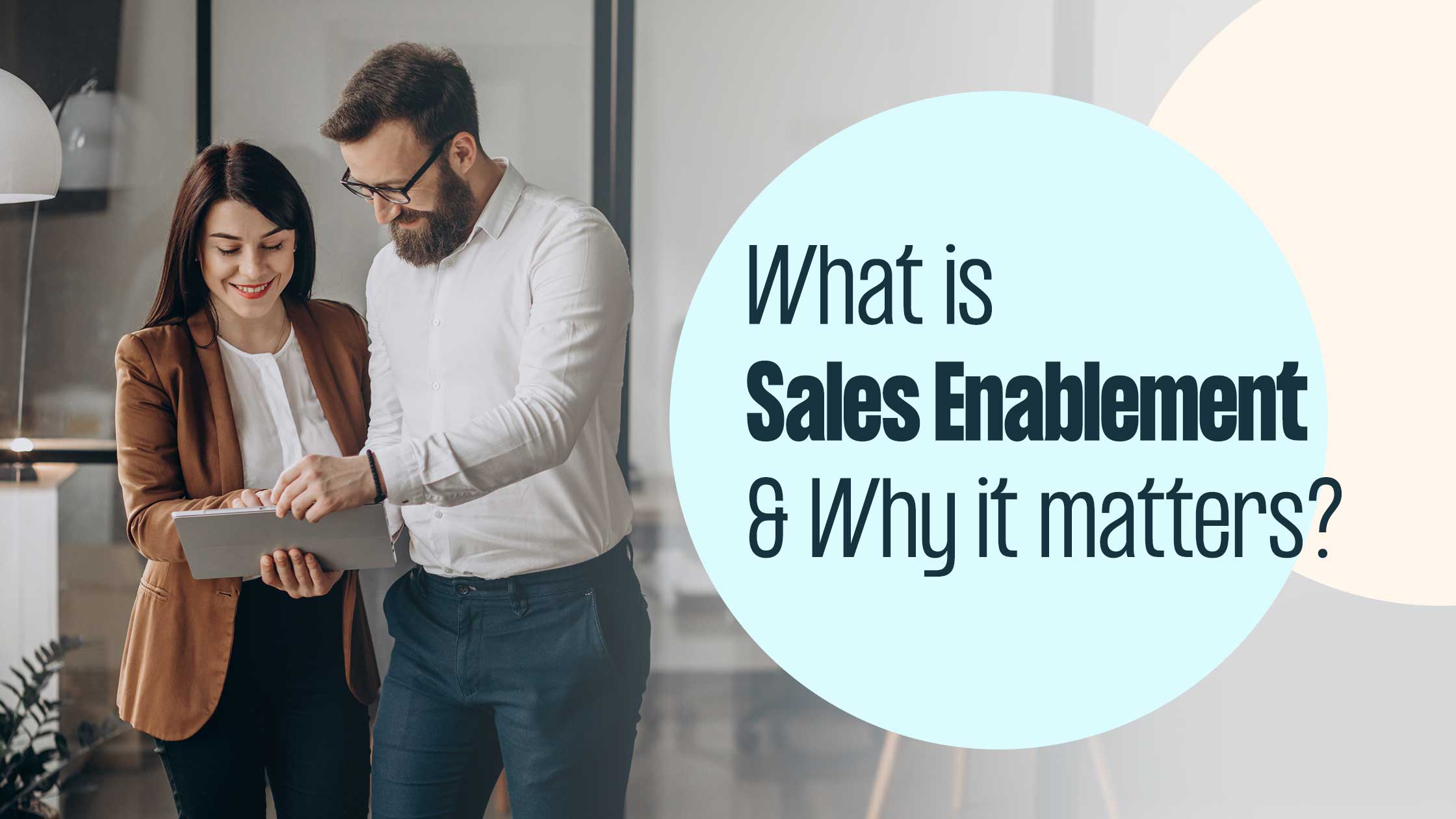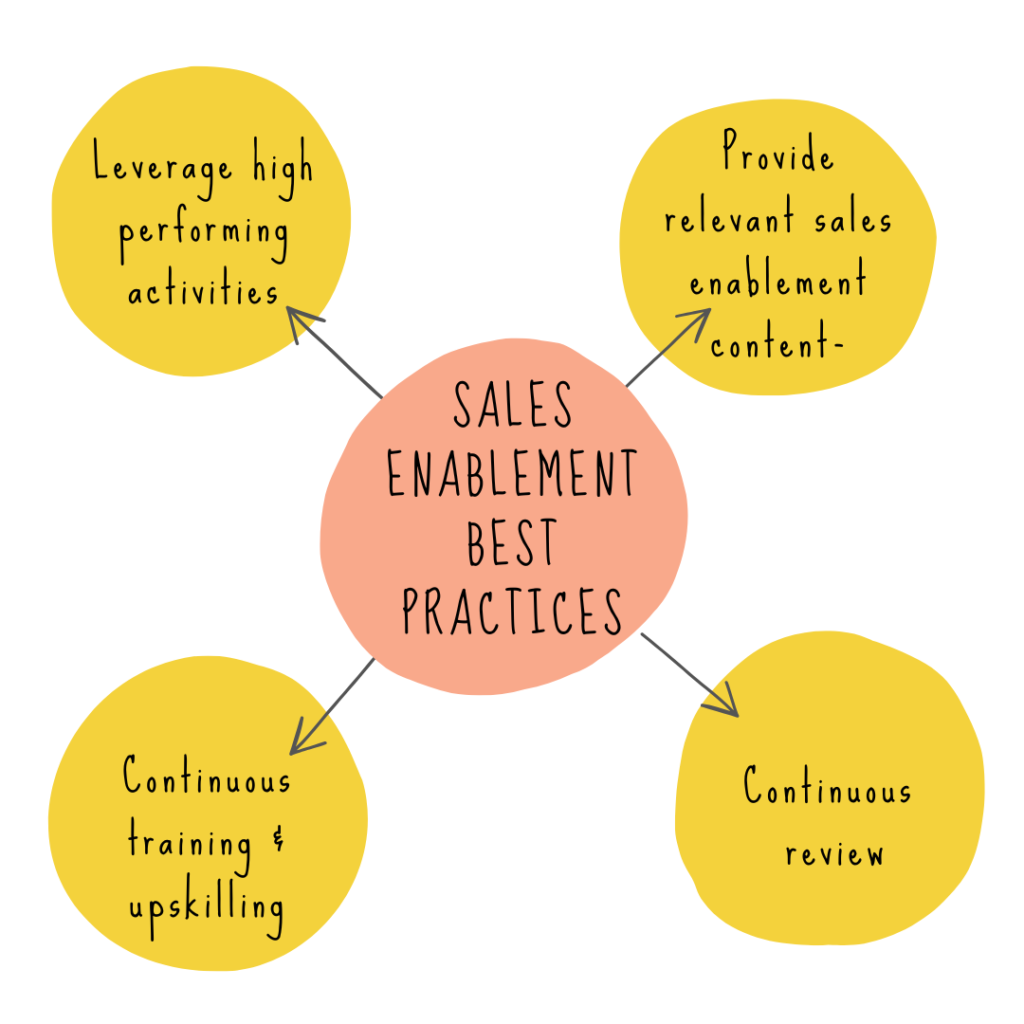Guide to Sales Enablement

Efficiency is what we all aspire for, especially when it comes to the workplace.
Sales teams, partners or any other channel that indulges in most communication with the end customers — productivity and performance are significant for them to deliver results. Hence, it is essential to enable them digitally to peak their performance, engage with buyers and eventually close more deals. That’s where a sales enablement platform can help brands strategically streamline the sales process of their partners and sales teams with efficient training, onboarding, relevant resources and tools. Any organisation seeking a competitive advantage needs to leverage sales enablement.
Sales teams supported by sales enablement have a 15% higher win rate on forecasted deals than those without. (Source: CSO Insights)
What is Sales Enablement?
According to Gartner, sales enablement is defined as a process of providing sales organisation with information, content and tools that help salespeople sell more effectively.
They suggest sales enablement can be grouped into two sections:
(1) Marketing content that sales teams share with end customers. (2) Training guides, coaching content, videos and tools etc., that sales teams will consume internally to sell better.
We at SalesPanda define sales enablement as providing your sales channels with the right enablement content, tools and other essential resources that can help them pitch better. A well-integrated sales enablement platform helps you from hiring to onboarding new partners and sales teams; to enabling them with relevant training courses, guides and other resources for better product understanding and customer acquisition.
Importance of Sales Enablement for Sales Teams and Partners
It is a very strategic approach that helps ensure that your sales teams are well-equipped with the right resources and tools that can add value while they are interacting with the end customers. Here we are discussing why it is important for sales teams and partners to be sales enabled:
Ease onboarding process- Having easy access to onboarding and training is an essential part of the recruitment process, but not having a set and standard approach to onboarding, can limit productivity and revenue. Having a sales enablement strategy in place where sales teams can access, download and watch the content needed for better communication can help them drive desired growth.
Effective sales coaching can improve win rates by as much as 29%.
Clarity on training content- One of the main reasons sales enablement platforms are useful is because they support sales. Different teams work together to enable sales teams and partners hence, they need continuous support, learning and knowledge-sharing to deliver desired results. With a well-integrated sales enablement platform, they can find all the training, sales communication and various other enablement content in one place that they can use while helping them stay engaged.
Sales reps spend an average of 440 hours each year trying to find the right content to share with their prospects and customers.
Smarter customer-centric approach- By implementing a sales enablement process, sales teams and partners can achieve a better customer-centric approach, where they are trained to understand customers’ perspectives. If a seller or partner is unable to present the value proposition of a product or service effectively, the customer will most likely lose interest. So, an effective sales enablement process helps you identify customer-specific needs, along with product capabilities from the customer’s perspective.
Analyse the progress of teams- Having visibility of progress helps bring precision to sales. The sales enablement platforms help you analyse the activities performed by sales teams and partners to track their progress. These insights help you how effectively they are implementing the learning into the pitching process, and what are areas where they have improved greatly. The components of your sales enablement platform help improve your sales processes highly including time, cost, monitoring and more.
Challenges of getting Sales Enablement right
The main objective of sales enablement strategies and tools is to help sales teams and partners do their job with ease and be more productive. But sales enablement technology is only useful or successful when your teams are implementing them into their workflow and make effective use of it. So, let’s see what are the challenges?
Implementation of new tools into existing sales process-Sales enablement technology plays an important role in building a smooth sales process but to grasp its full capability, you need to have a clear understanding of your current sales flow. Questions like What changes do your current sales process require? How does the communication flow? What are the challenges that need to be addressed? And more. Having a clear picture of these will help you analyse the success of your sales enablement process later. Once you have a clear picture of these aspects, you can seamlessly implement the sales enablement process into your sales teams and partners’ workflow. The key point here is that it should resolve their pain points and help them grow without making the process complicated.
Finding the right content easily- Easy navigation of relevant content for a better understanding of the product and services is a very essential element of sales enablement strategy. They should have a centralised sales enablement content repository where they can easily locate their content without wasting their valuable time. Sales teams and partners need continuous support and guidance to perform their sales tasks smoothly. Hence, they rely on training modules, guides, coaching and more to learn how to pitch and sell effectively. Hence, companies should ensure their enablement plan and resources like training courses, sales communication, sales pitches etc., are in place for sales teams and partners to make the most of it.
Goal setting- Any new approach should have a defined set of goals on which you will measure the success of your initiative. A sales enablement strategy should have defined long-term and short-term goals for the sales enablement tools along with the necessary analytics to measure its effectiveness. It also helps identify expectations that companies have from sales teams and partners. Such as how effectively they are communicating? Do they understand the products & services? Are they sharing relevant information with customers? How actively they are using the sales enablement platform? And many similar concerns.
Sales and marketing alignment can contribute to a 67% increase in closed deals. (www.business2community.com)
Marketing and sales alignment- Even though these are two different departments, there cannot be a gap between their work. If there are any misalignments between these two teams it can affect conversion as well as customer engagement. Both teams should be on the same page when it comes to understanding the customer and market requirements. They should share relevant insights, feedback, and information and work together in alignment to create better outcomes for the organisation. Both departments should create a strategy that gets integrated smoothly with the entire process without a gap.

Sales Enablement best practices
Leverage high performing activities- This crucial activity includes 2-essential steps. First, to identify high-performing salespeople and partners. Second, embrace their activities as a standard practice to bring the best out of the rest of the teams. Embracing these best practices means making them accessible to the teams and also helping implement them through sales training. It also means the whole team can leverage these sales enablement best practices by utilising them at relevant stages of the sales cycle to boost sales performance, as well as, business revenue.
Provide relevant sales enablement content- The aim to implement the sales enablement process in your sales teams and partners’ workflow is to help them learn to overcome objections and create better sales pitches. Each stage of the sales cycle has different requirements and buyer persona, hence there should be relevant content that caters to the needs of different buyer personas. It can include webinars, guides, case studies etc., that can help make the decision process more appealing. Interact with your sales teams and partners to find out the type of content that would be most useful and help them to pitch their customers better.
Continuous training & upskilling- Growth is continuous which is why training and upskilling should also be continuous. Technology keeps evolving and so does information, so, your sales teams and partners should also continuously learn and acquire new skills for themselves and the business to grow. Training includes activities like courses, quizzes, workshops, certifications and more where they can learn about products and ways to pitch. Eventually, every sales enablement process is implemented to influence customers’ buying experience where they expect more with every interaction.
Continuous review- One of the most essential things to understand is that a sales enablement platform is not something you design once, it evolves with the experience be it within the organisation or market. It is important to review it continuously so that your sales teams and partners aren’t left behind. Identify the processes that are working, and what are the outcomes, this will help evaluate the sales enablement process and whether the objectives are being met.
With growing interest in digital technology adoption, many organisations are implementing sales enablement technology for agents, sales teams and partners. SalesPanda is a sales enablement and acceleration platform that helps brands sell more via extended enterprise (Agents, Advisors, Distributors, Partners, Sales Teams, Branches etc.). Our platform helps improve sales productivity and performance of sales teams and partners with effective digital automation and deep Analytics. It is well-integrated with modules that help brands enable them with training, coaching materials, guides, videos and tools. Partners and sales teams also get easy access to branded marketing content pushed centrally — to further communicate the value proposition effectively with end customers.
